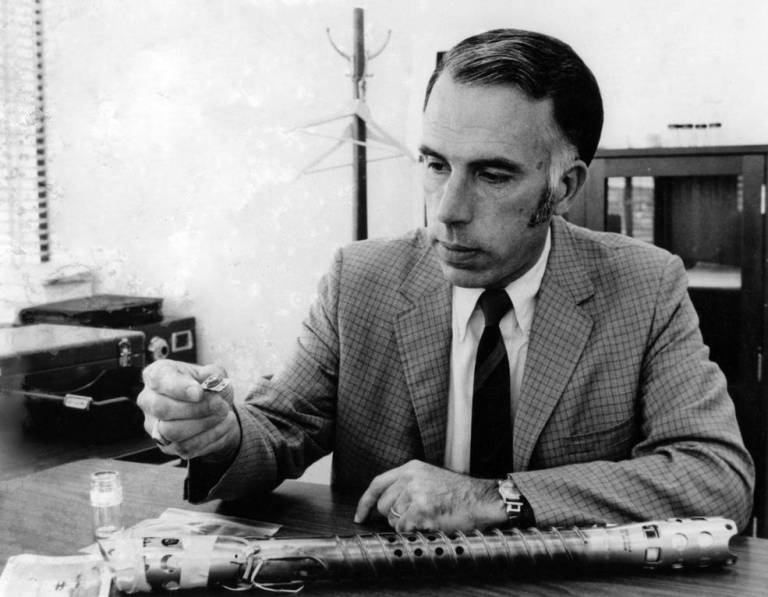
Edgar M. Cortright
Former Director at Langley Research Center
Born on July 29, 1923, in Hastings, Pennsylvania, Cortright served as a lieutenant in the U.S. Navy during World War II, and later resumed his education at Rensselaer Polytechnic Institute, where he received both a B.S. and an M.S. degree in aeronautical engineering. After graduation. Cortright joined the NACA as an aeronautical research scientist at Lewis Flight Propulsion Laboratory in Cleveland. From 1954–1958, he was Lewis’ Chief of the Supersonic Wind Tunnel Branch and conducted research on supersonic aerodynamics. In 1958 he was appointed Chief of the Plasma Physics Branch.
But, Sputnik changed everything. In 1958, NACA became NASA, and Cortright was named Chief of Advanced Technology Programs. He directed initial formulation of NASA’s meteorological satellite program, including TIROS and Nimbus. Later, he was appointed Assistant Director for Lunar and Planetary Programs. In 1961, he was appointed Deputy Director of NASA’s Office of Space Sciences. In 1963, he was appointed Deputy Associate Administrator for Space Sciences, the office responsible for applications, planning and directing NASA’s programs for robotic scientific exploration and utilization of space, including the lunar and planetary probes, the geophysical and astronomical satellites and probes, biosciences, applications satellites, and the development and use of light and medium launch vehicles. Over the next 10 years, he played a key role in planning and directing many human and robotic space programs. In 1968, Dr. Cortright was named Deputy Associate Administrator, Office of Manned Space Flight.
Later in 1968, Cortright became Director of NASA’s Langley Research Center in Hampton, Virginia. Under his leadership the NACA’s original research laboratory turned its talents to Mars and successfully ran Project Viking. Launched in 1975, the two Viking probes (each including an orbiter and lander) sent the first high- resolution images of the Martian surface and analyzed surface samples in the landers’ on-board laboratory searching for signs of life. Viking 1 was the first human-made object to successfully soft-land on the Red Planet. In 1970 Cortright was also called upon to lead the Apollo 13 failure review board (also known as the Cortright Commission). Cortright retired from NASA in 1975 after 30 years of government service. He went on to further accomplishments in private industry, eventually retiring as President of the Lockheed- California Company in 1983.
Cortright is the author of numerous technical reports and articles. He was proud of his books, “Exploring Space With a Camera,” which he compiled and edited, and “Apollo Expeditions to the Moon,” which he edited. His awards and citations include the Arthur Flemming Award (1963); the NASA Outstanding Leadership Medal (1966); the NASA Distinguished Service Medal (1967); and the AAS Space Flight Award (1970). Cortright also received honorary doctorates from Rensselaer Polytechnic Institute and George Washington University.
Read Cortright’s oral history, conducted in 1998.
Learn more about Cortright’s tenure as Langley Center Director in Spaceflight Revolution: NASA Langley Research Center from Sputnik to Apollo.




























